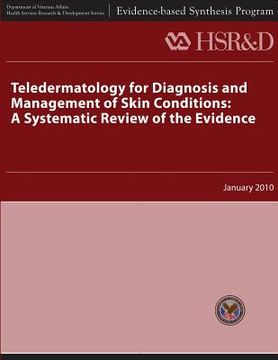Teledermatology for Diagnosis and Management of Skin Conditions: A Systematic Review of Evidence (in English)
Synopsis "Teledermatology for Diagnosis and Management of Skin Conditions: A Systematic Review of Evidence (in English)"
Telemedicine uses telecommunication technology to transfer medical information. Due to the visual nature of a skin examination, telemedicine, specifically, teledermatology, is a potentially valuable tool in the diagnosis and management of dermatologic diseases for patients in rural areas where a dermatologist may not be available. Teledermatology may also be useful in primary care settings to triage cases and limit unnecessary dermatology clinic referrals as well as to assist with follow-up care or monitoring after an in-person dermatology visit. Two particular types of teledermatology are commonly employed. Store and forward (SAF) uses asynchronous still digital image technology for communication, similar to an email system. Participants are typically separated by both time and space. Real-time or live interactive (LI) uses video-conferencing technology. Participants are separated by space, not by time. Both systems have advantages and disadvantages. SAF requires less technological sophistication and lower cost equipment than LI, permits the referring provider to submit the consultation with accompanying image(s) to the dermatologist for review at a later time, and does not require the dermatologist to be immediately available or on-call to urgently review the teleconsult while the patient is in the primary care clinic. In contrast, LI permits a more dynamic assessment of the skin condition and allows the dermatologist to obtain a real-time history from both the patient and the referring provider, to make an immediate initial diagnosis, and to provide a management plan. Owing partly to the technological simplicity of SAF and the fact that SAF allows the dermatologist to review the telemedicine consult either outside of normal clinic hours or bundled into separate time slots within an existing clinic, SAF is the more widely used form of teledermatology in the VA. The diagnostic and management accuracy (match of teledermatology diagnosis or in-person dermatology diagnosis with a gold standard of histopathology or other laboratory test) and concordance (agreement between teledermatology and in-person dermatology) of these technologies, their cost-effectiveness, and their impact on clinical management and patient outcomes (including satisfaction) are not well understood. Although research demonstrating that teledermatology is accurate and cost-effective is essential, it is not sufficient. We conducted an evidence synthesis report to systematically review and summarize the scientific literature addressing: 1) teledermatology for the diagnosis of skin conditions, 2) teledermatology for the management of skin conditions, 3) clinical outcomes when teledermatology is used, 4) the cost of teledermatology compared with usual care (in-person dermatology), and 5) key elements of and barriers to successful implementation of teledermatology. We addressed the following key questions: KQ #1 1a. How does the accuracy of teledermatology compare to usual care (in-person dermatology) for the diagnosis of skin conditions? 1b. How does the concordance of teledermatology compare to usual care (in-person dermatology) for the diagnosis of skin conditions? KQ #2 2a. How does the accuracy of teledermatology compare to usual care (in-person dermatology) for clinical management of skin conditions? 2b. How does the concordance of teledermatology compare to usual care (in-person dermatology) for clinical management of skin conditions? KQ #3 3. How do clinical outcomes (clinical course, satisfaction, quality of life, visits avoided) of teledermatology compare to usual care (in-person dermatology) for skin conditions? KQ #4 4. How does the cost of teledermatology compare to usual care (in-person dermatology)? KQ #5 5. What are the key structural and process elements associated with successful implementation of teledermatology and what are the barriers?

